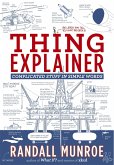Master engineering mathematics through mathematical modeling and unique differential equation building principles. Learn to solve complex engineering challenges with practical applications in fluid mechanics, thermodynamics, and more. A comprehensive guide for 2024. Meta Description: Learn how to tackle engineering problems with effectively necessary equations. This guide offers a step-by-step approach to transforming complex challenges into solvable equations by covering problem identification, decomposition, analysis, equation development, and validation. The procedure is defined to enhance your skills in understanding engineering problems and translating them into relevant mathematical equations (i.e., ordinary, differential, and partial differential equations) for fluid mechanics, thermodynamics, and more engineering purposes. Keywords: Engineering, Equation, Engineering Mathematics, Engineering math, Engineering problem, Engineering equation, Differential equation, PDE, Partial differential equation, Systems, Math problem, Mathematical modeling, Mathematics, Math equation, Problem, Heat transfer, Navier-Stokes equation, Fluid mechanics, Thermodynamics Introduction: This guide provides a structured approach to solving engineering problems using equations. Following these steps, you can effectively tackle engineering problems and build accurate mathematical models accordingly to turn the problems into mathematical equations. Step 1: Identify the Problem * Clearly define the problem to be solved. * Understand the context and objectives. Step 2: Decompose the Problem * Break down complex problems into smaller, more manageable components. * Identify the key variables and relationships. Step 3: Analyze Measurable Properties 1. Understand the system's characteristics, such as: * Control volume * Surrounding space * Time * Conditions 2. Identify relevant measurable properties. Step 4: Quantify Energy Interactions * Analyze how energy interacts with the system's measurable properties. * Consider concepts like work, heat, and potential energy. Step 5: Develop the Equation 3. Create a mathematical model that accurately represents the problem. 4. Use appropriate equations, such as: * Differential equations * Partial differential equations * Systems of equations 5. Consider the Navier-Stokes and heat transfer equations for fluid mechanical problems. Step 6: Validate the Equation * Verify the equation's accuracy by comparing its predictions to real-world data. * Use experimental or numerical methods to validate the model. Conclusions: By following these steps, you can develop the skills and confidence needed to identify engineering problems in terms of equations. This guide provides a practical framework for both students and professionals.
Hinweis: Dieser Artikel kann nur an eine deutsche Lieferadresse ausgeliefert werden.
Hinweis: Dieser Artikel kann nur an eine deutsche Lieferadresse ausgeliefert werden.








